Understanding Abdominoplasty Post Weight Loss and Bariatric Surgery
Book Online NowIn my practice in Maitland, I meet many post bariatric patients who have achieved significant weight loss, whether through bariatric surgery such as gastric bypass surgery, sleeve gastrectomy, or lifestyle changes, and are now managing the excess skin and weakened abdominal wall that can remain [1,2]. As a specialist surgeon with more than 15 years of experience, I provide information on how abdominoplasty surgery (tummy tuck surgery) and other body contouring surgery may help resolve some of these issues. In this article I outline what an abdominoplasty procedure involves, who it may be suitable for, and what to expect at each stage. This information is general in nature; it is not a substitute for medical advice. A personal consultation is required to assess individual circumstances.
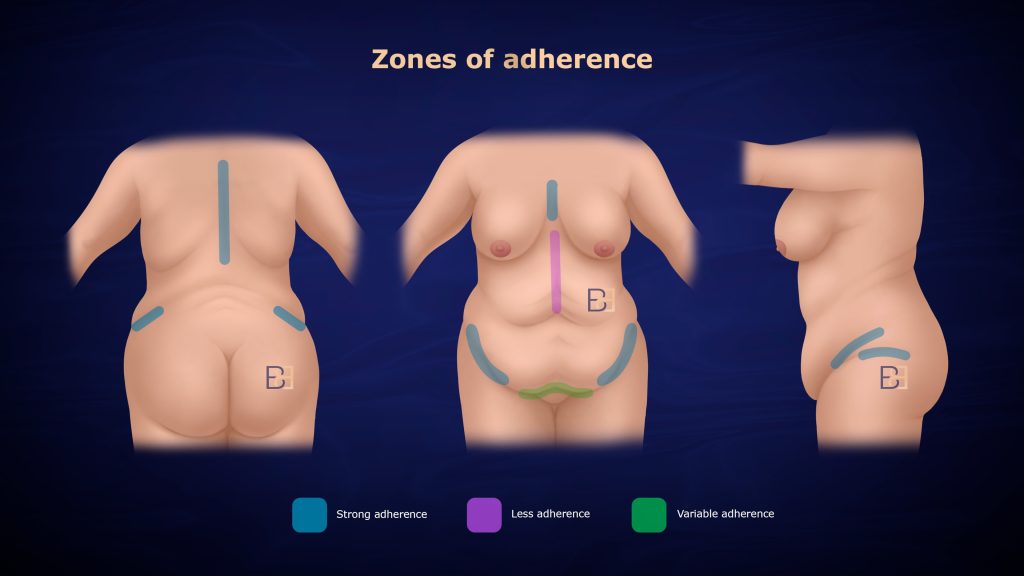
Why Do Some People Have Excess Skin After Weight Loss?
Losing a large amount of weight—especially after bariatric surgery—can leave the skin unable to retract [2]. Years of stretching during obesity may reduce elasticity. As a result, people may experience loose skin, persistent skin irritation, rashes and difficulty with clothing. Research shows that many people who undergo bariatric surgery consider body contouring surgery afterwards [3]. In my practice I see that redundant skin can limit mobility and may contribute to physical challenges.
Book Online NowWhat Is Body Contouring and How Does Abdominoplasty Fit In?
Body contouring surgery is a broad term for reconstructive surgical procedures that involve removing excess skin. After massive weight loss, these body contouring procedures may assist with body function and appearance [4]. Options include abdominoplasty (tummy tuck), thigh reduction surgery (thighplasty), arm reduction (brachioplasty), breast lift (mastopexy), and circumferential body lift (belt lipectomy). In my practice, abdominoplasty is often performed because it targets the abdominal region where excess skin and fat and abdominal muscle separation (diastasis recti) are common. Unlike a simple panniculectomy, an abdominoplasty procedure also tightens the underlying abdominal muscles (diastasis recti).
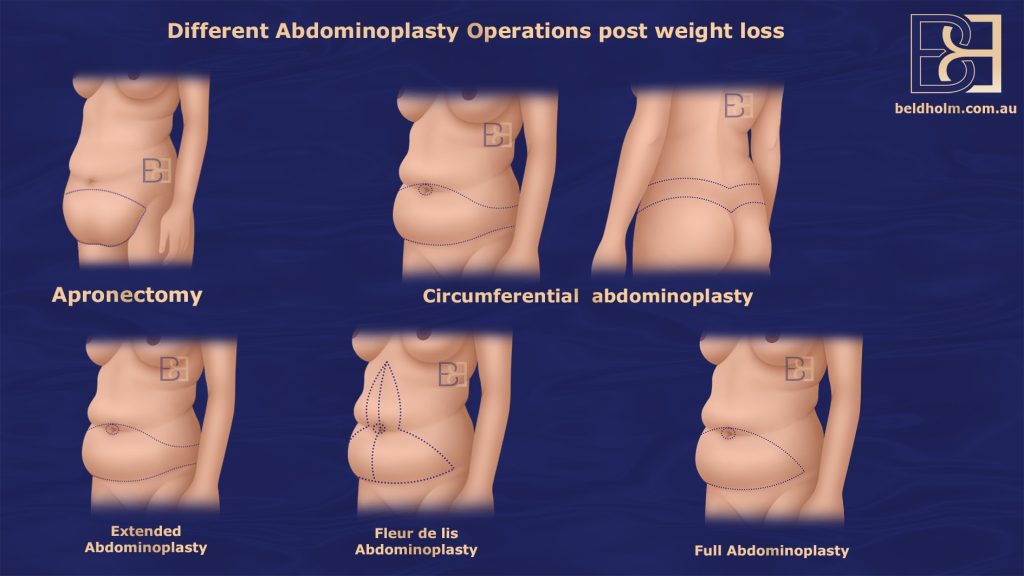
Who Is a Candidate for Abdominoplasty?
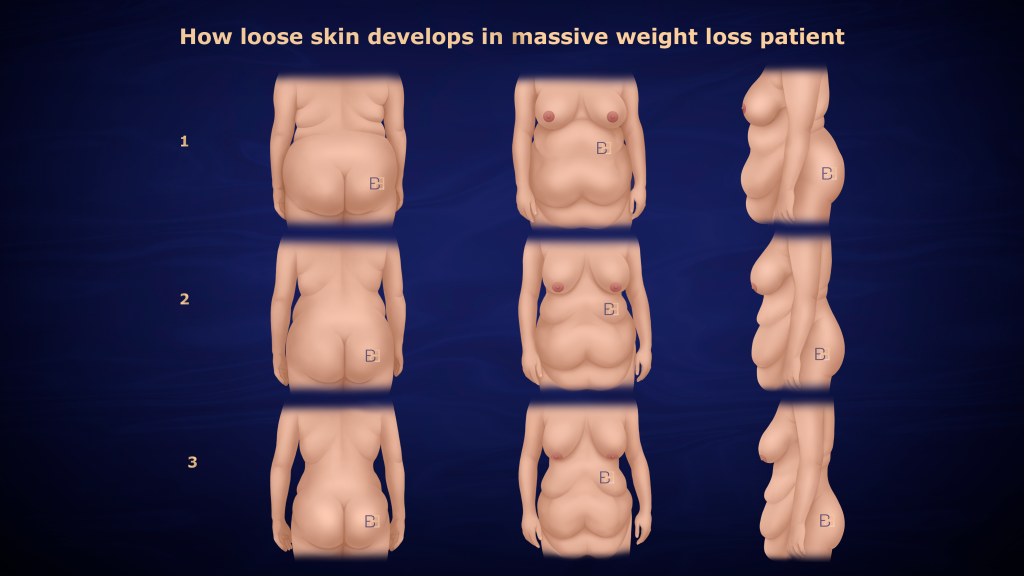
Abdominoplasty is not suitable for everyone. During consultation, I assess several factors:
- Stable weight: It is generally recommended that weight has been stable for at least six months, ideally 12–18 months (weight stability).
- Significant weight loss: Definitions include a reduction of more than five BMI units or at least 50 % of excess weight [2]. Both bariatric surgery patients and those who lost weight through lifestyle measures may be candidates.
- Functional problems: Skin folds that cause rashes, infections or hinder activity may indicate suitability for body contouring surgery [1].
- Lifestyle factors: Smoking and some conditions such as diabetes can impair healing and increase risk of poor wound healing.
- Psychological readiness: Body contouring is major surgery. Having realistic expectations is essential.
Medicare item 30177 reimburses some abdominoplasty costs for patients who meet specific inclusion and exclusion criteria [1]. These include massive weight loss, a stable weight for six months and functional problems such as skin irritation or recurrent infections. Because funding rules change, my team provides guidance on eligibility and insurance during pre‑operative appointments.
What Do Medicare Statistics in Australia Tell Us?
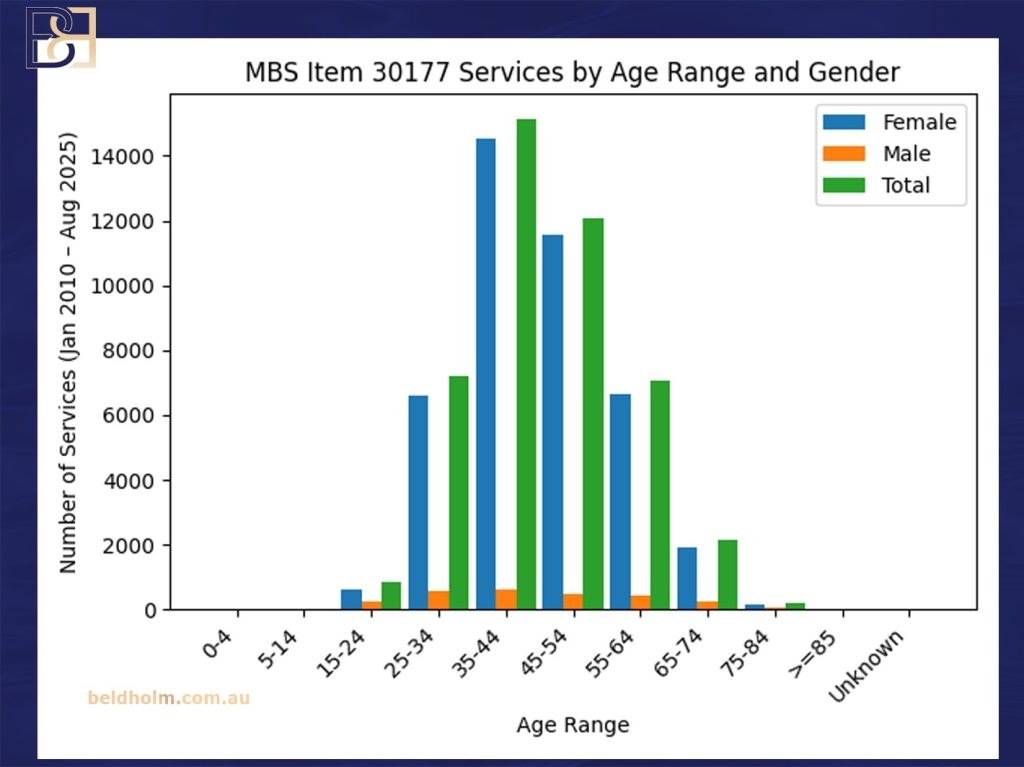
I analysed national Medicare data for MBS 30177 (abdominoplasty post weight loss) (July 2016–June 2025). Over this period the number of abdominoplasty services peaked at around 2 902 in 2020/21 and declined to 2 106 in 2024/25. Overall utilisation averages about 2 296 services per year. These trends likely reflect changing funding rules, the impact of COVID‑19 on elective surgery and evolving patient demand.
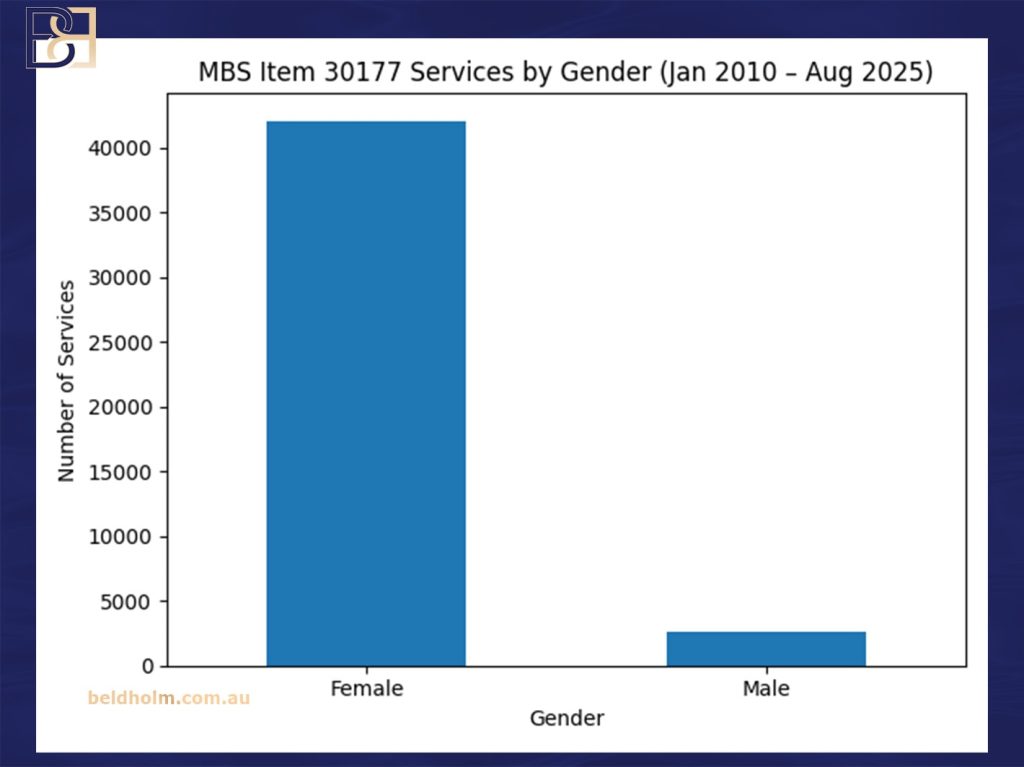
Women account for roughly 94 % of item 30177 procedures, and the majority of patients are aged 35–54. New South Wales performs the highest volume of operations, followed by Victoria and Queensland. This demographic profile matches what we see in our practice—most of our patients are women in their thirties or forties who have completed their families and achieved weight stability.
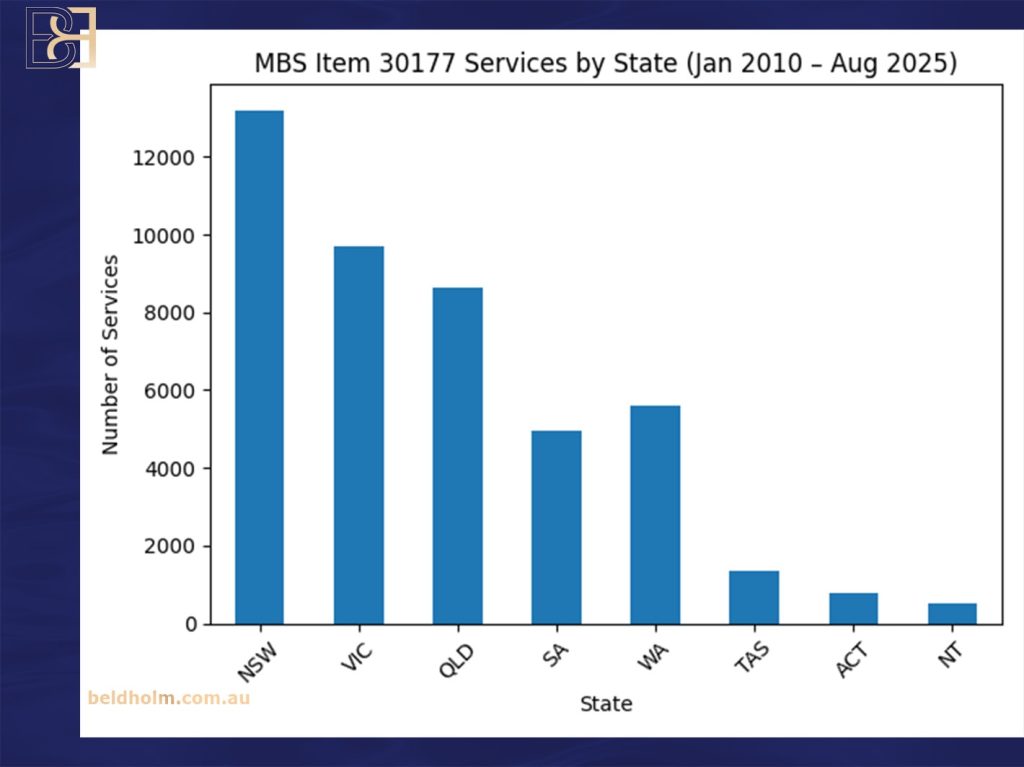
Types of Abdominoplasty Procedures
Abdominoplasty is the most widely recognised abdominal surgical procedure in the public space. However, there is not just one type – there are several variations. In this article I focus on operations that address the front of the abdomen. The extent of loose skin generally determines the procedure. If there is only minimal skin excess in the lower abdomen, a limited abdominoplasty may be considered. If there is greater excess skin and fat extending hip to hip, often with abdominal muscle separation (diastasis recti), then a standard abdominoplasty may be appropriate. If skin laxity extends around the flanks and back, an extended abdominoplasty may be required. These mainly remove vertical loose skin. If there is horizontal laxity, then a Fleur‑de‑Lis abdominoplasty may be required. Where there is upper abdominal laxity, an upper abdominal lipectomy may be appropriate [3,4].
Understanding Loose Skin After Weight Loss: Horizontal vs Vertical
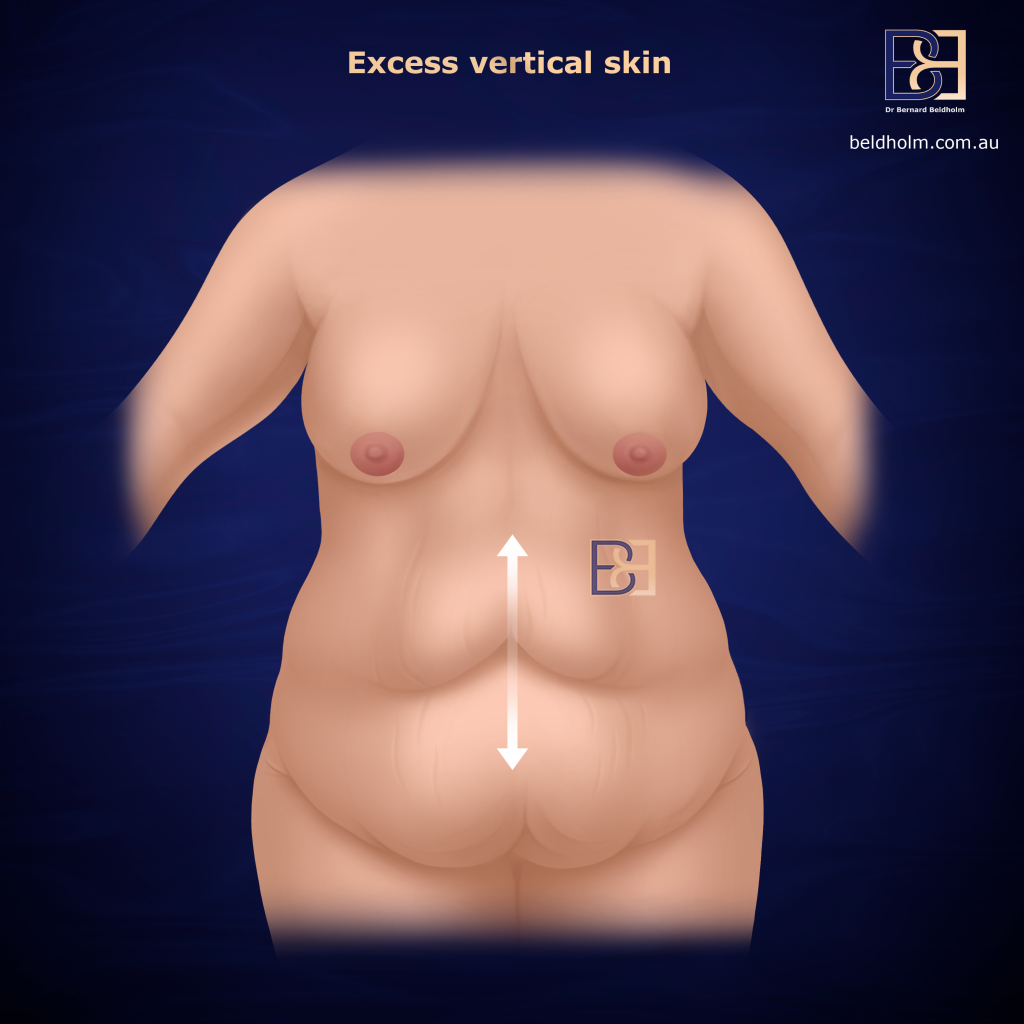
After obesity the abdomen expands like a balloon. After weight loss, the skin may deflate, leaving loose skin vertically and horizontally. Vertical excess is treated with abdominoplasty (tummy tuck surgery) that pulls downward.
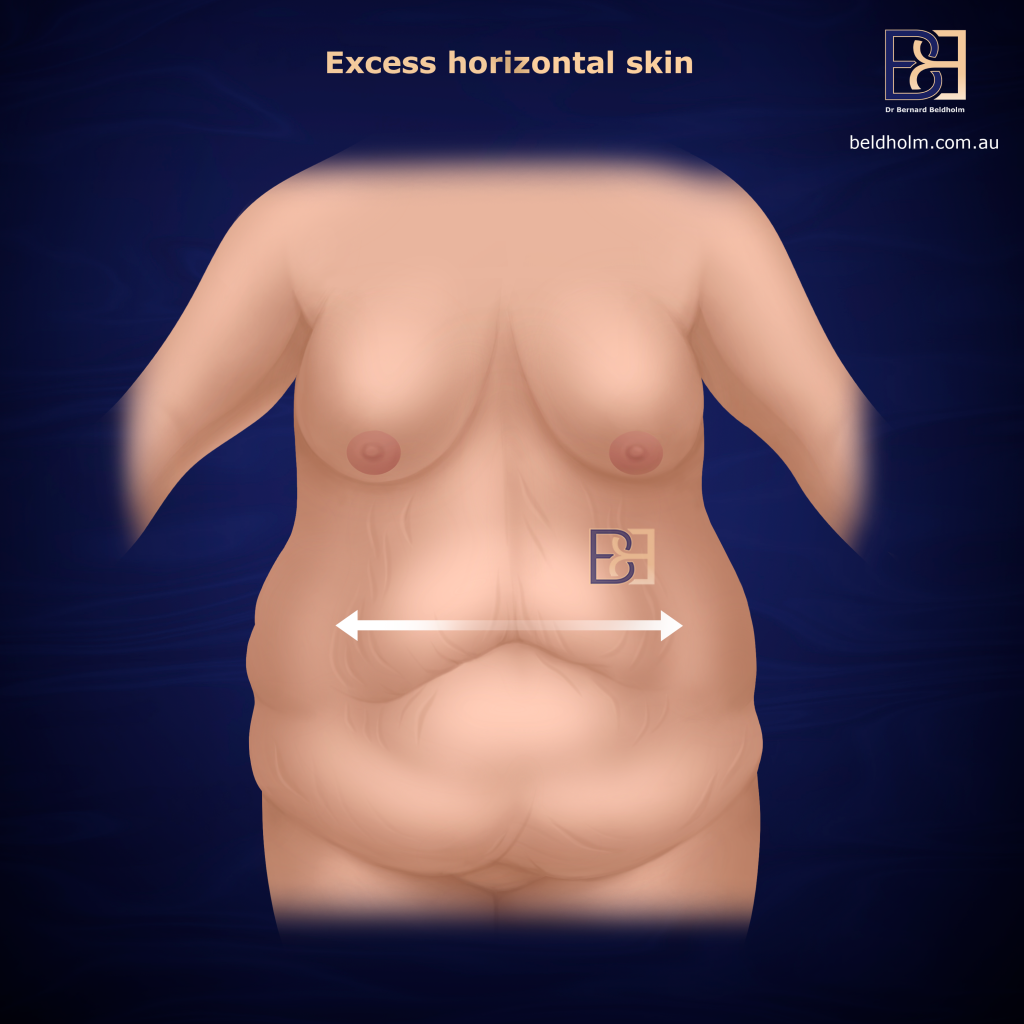
Horizontal excess is treated with a vertical excision such as Fleur‑de‑Lis abdominoplasty. Upper abdominal laxity may be treated with an upper abdominal lipectomy.
Limited Abdominoplasty (sometimes called Mini Abdominoplasty)
Uses a small incision to remove a limited amount of skin excess. Rarely used for massive weight loss patients, whose loose skin extends above the navel.
Full (Standard) Abdominoplasty
Involves hip‑to‑hip incision, repair of diastasis recti, and removal of excess skin and fat with umbilical repositioning. Often suitable after experiencing significant weight loss with diastasis recti.
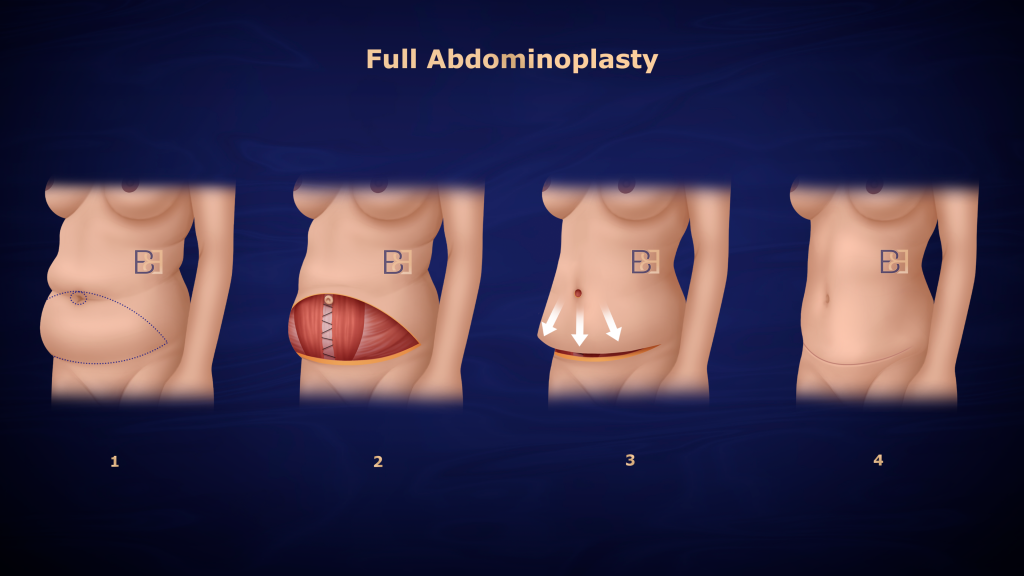
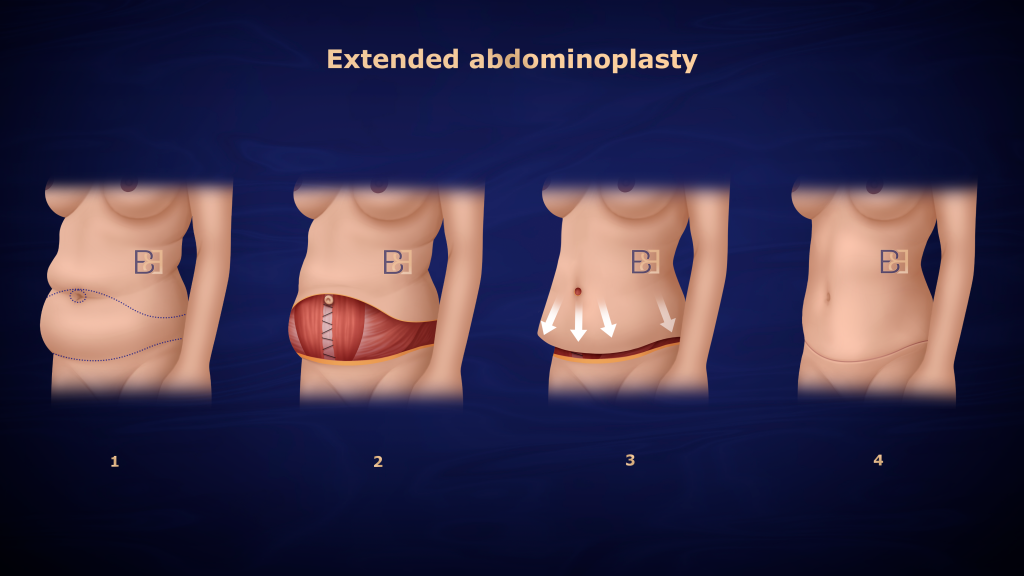
Extended Abdominoplasty
For post weight loss patients with excess skin and fat wrapping around flanks and lower back. May be combined with suction assisted lipectomy.
Apronectomy (Panniculectomy)
This surgical intervention mainly focuses on the “pannus” or apron hanging from the lower abdomen. Less common than other abdominoplasty procedures.
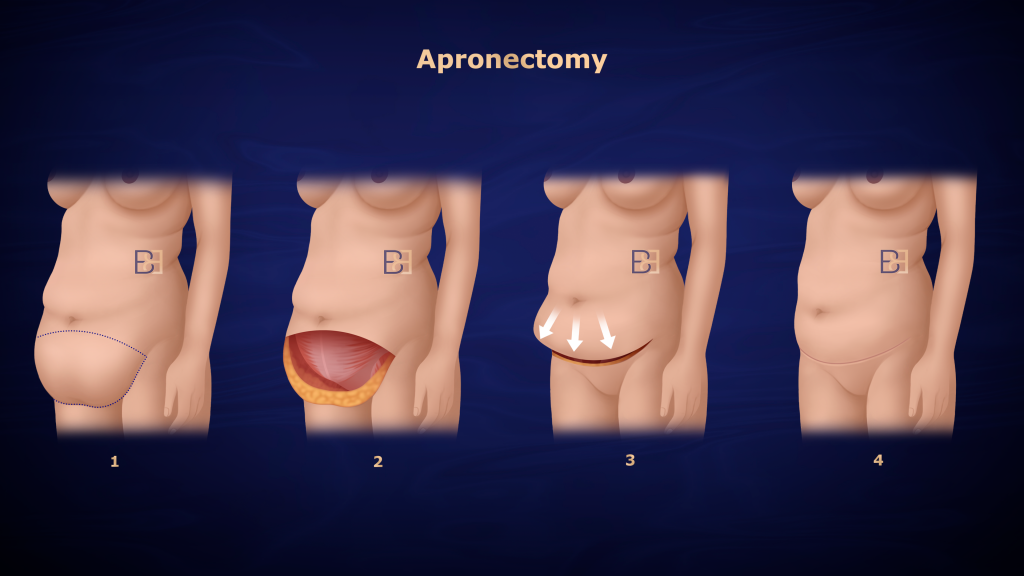
Beyond the Basics
Other post bariatric plastic surgery procedures include Fleur‑de‑Lis abdominoplasty for horizontal laxity and circumferential body lift for 360‑degree laxity. Combined body contouring procedures may also be considered [3].
Liposuction (Suction Assisted Lipectomy)
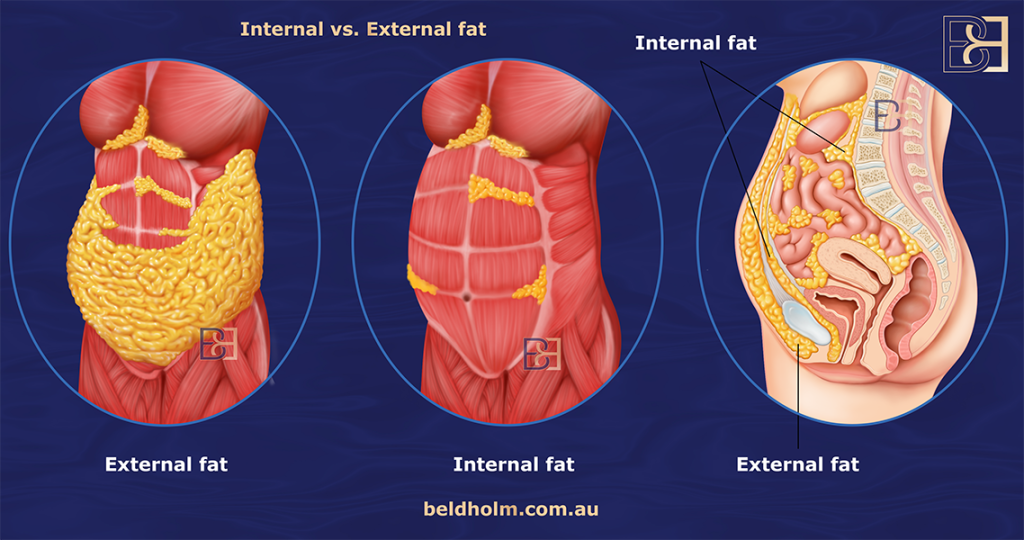
Some post bariatric patients still have fat deposits despite major weight loss. In selected cases, suction assisted lipectomy (liposuction, including VASER) is performed before abdominoplasty surgery [6]. Adding liposuction (suction-assisted lipectomy) allows the removal of fat and skin but increases operative time. This requires discussion with patients and consideration of surgical outcomes.
Hernia Repair
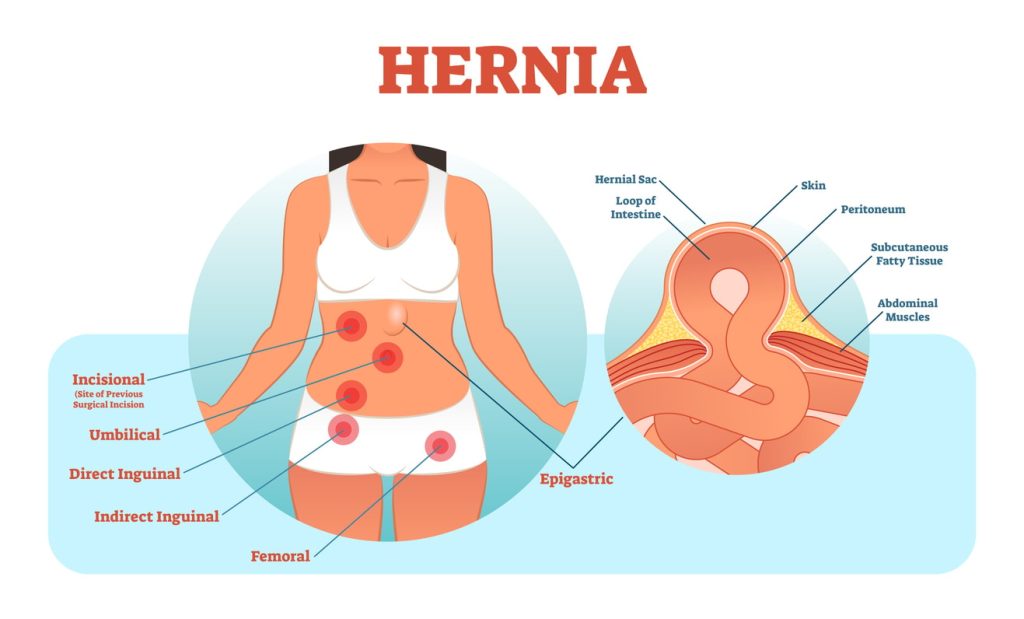
Umbilical Hernias
These occur at the navel and are common after pregnancy or weight change.
Ventral Hernias
These develop in the midline of the abdominal wall.
Incisional Hernias
These appear at the site of previous surgical scars.
Epigastric Hernias
Found in the upper midline between the breastbone and navel.
Spigelian Hernias
Located along the lateral edge of the rectus abdominis muscle.
Inguinal and Femoral Hernias
These involve the groin region and, while less common in abdominoplasty, can be treated simultaneously during the procedure to restore abdominal wall integrity. Addressing these hernias in the same operation reduces the need for additional surgical interventions and supports a smoother recovery.
Preparing for Surgery

Preparation is individualised. During consultation, I review history, tests, and sometimes imaging. For bariatric patients, nutrition is critical. A GP may do a nutrition screen, and a dietitian can help optimise nutrition pre‑surgery. Deficiencies can increase risk of postoperative complications. General advice:
- Maintain a stable weight.
- Stop smoking at least four weeks before.
- Arrange home support during surgery recovery.
- Prepare your space with medications and supplies.
Preoperative Preparation with Dr Beldholm
I believe in extensive preparation and individualised care. At least two consultations are held. One is in‑person. We review goals, history, and take photos. I explain the abdominoplasty procedure, risks, and recovery. My coordinator assists with quotes, bookings and costs.
The Surgical Procedure
Abdominoplasty is performed under general anaesthesia in an accredited hospital. Surgery is at Maitland Private Hospital. Abdominoplasty typically requires a 1–3 day stay. During your stay I review progress daily. Incisions are planned low, muscles may be repaired, and excess skin and fat are removed. Compression garments and drains may be used. Operation length 3–5 hours [5].
Recovery
Recovery involves rest, wound care and gradual activity. Walking is encouraged to reduce blood clots and risk of deep vein thrombosis or pulmonary embolism. Many return to work in 2–3 weeks, light exercise at 6 weeks. Strenuous activity is avoided for 8 weeks. Scars may take 12–18 months to mature [7].
Risks and Complications
Every surgical procedure has risks. Potential abdominoplasty complications include:
- Anaesthetic risks
- Bleeding or haematoma
- Infection
- Pulmonary embolism
- Deep vein thrombosis
- Seroma
- Wound dehiscence
- Wound complications and scarring
Studies report infection in 4 %, dehiscence in 8.6 %, seroma in 8.4 %, haematoma in 2.6 % [1,4,5]. Morbidly obese patients and those with higher BMI have greater risk of poor wound healing. Preventive measures include drains, compression, mobilisation, and anticoagulants.
Long‑Term Considerations
To protect surgical outcomes, remain at a stable weight, exercise, and follow care instructions. Scars mature in 12–18 months. Follow‑up is important. This supports both physical and psychosocial health and may influence health related quality measures such as quality of life.
Timing Relative to Bariatric Surgery
It is generally recommended to wait until weight has been stable for 6–12 months and at least 18 months since weight loss surgery or undergoing bariatric surgery [2,6]. Early panniculectomy may be considered for medical reasons. These timings help optimise surgical outcomes.
Panniculectomy Versus Abdominoplasty
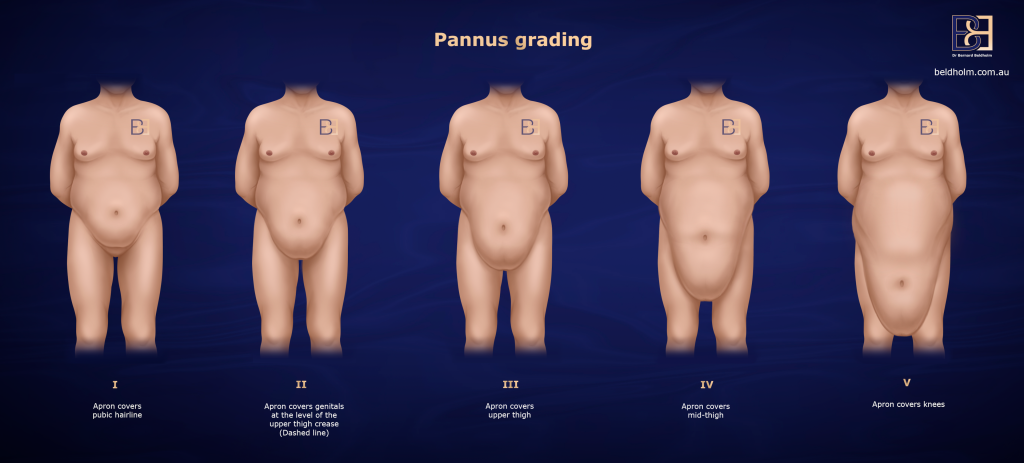
A panniculectomy removes only the apron of skin. It is functional. Abdominoplasty surgery (tummy tuck surgery) removes skin and tightens abdominal muscles (Diastasis recti). Published studies have also reported changes in body image measures after surgery [3,4].
Final Conclusions by Dr Beldholm
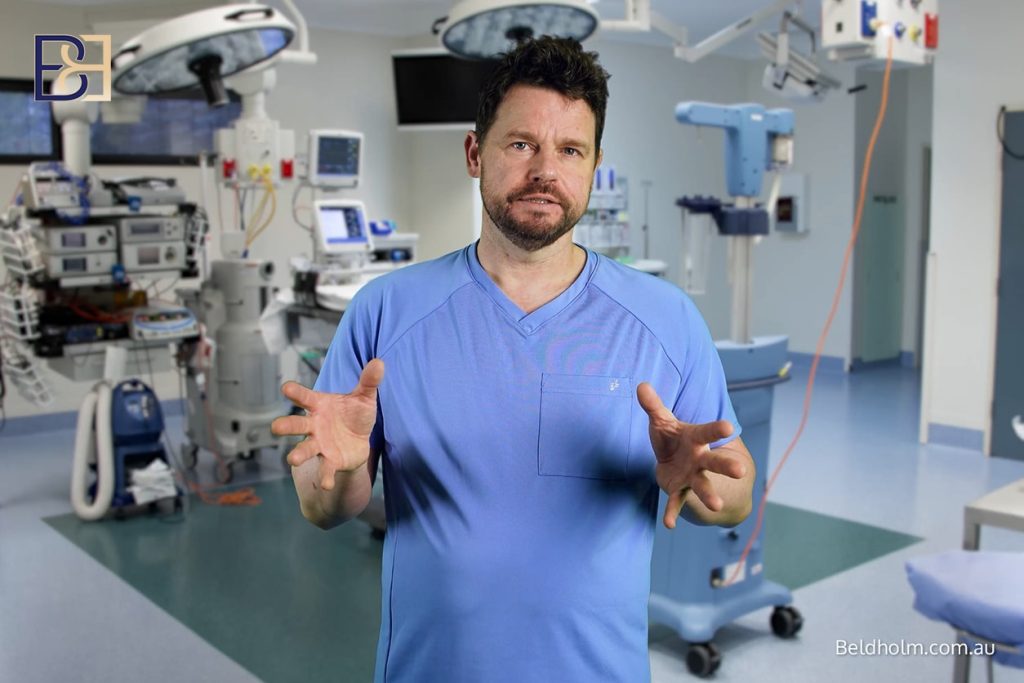
Abdominoplasty post weight loss and bariatric surgery requires careful planning. It is important to assess patient characteristics, skin and fat distribution. Longer scars may be required in experienced massive weight loss cases. I have performed post bariatric abdominoplasty for over 15 years. Each patient is assessed individually. The goal is to support health related quality and quality of life outcomes for post weight loss patients and bariatric patients.
References
- May A, Rudduck E, Wong D, Prowse P, Proudman T, Harries R. The effectiveness of criteria‑based, publicly funded abdominoplasty after massive weight loss: a prospective cohort study. Australas J Plast Surg. 2023;6(1):70235. doi:10.34239/ajops.70235
- Australia and New Zealand Bariatric Surgery Registry. Fewer Australians having bariatric surgery: Monash University‑led report. Monash University News. 21 Aug 2024. Available at: https://www.monash.edu (accessed 28 Sep 2025).
- Ibáñez J, et al. Experience in post‑bariatric abdominoplasty for patients with massive weight loss. J Pers Med. 2024;14:. Available at: https://pubmed.ncbi.nlm.nih.gov
- Freschi A, et al. Abdominoplasty after massive weight loss: safety preservation fascia technique and clinical outcomes in a large single series‑comparative study. Front Surg. 2024;11:1337948. doi:10.3389/fsurg.2024.1337948
- Schulz T, Kirsten T, Langer S, Nuwayhid R. Hope for the best, but prepare for the worst – Diagnostic accuracy of the ACS‑NSQIP risk model for patients undergoing abdominoplasty after massive weight loss: Results from a retrospective cohort study. JPRAS Open. 2024;43:347–356.
- Flores T, Schön J, Glisic C, et al. Bariatric surgery before abdominoplasty is associated with increased perioperative anemia, hemoglobin loss and drainage fluid volume: analysis of 505 body‑contouring procedures. J Clin Med. 2025;14(11):3783.
- Vater AM, Fietz J, Schultze‑Mosgau LE, et al. Understanding the long‑term effects of inverted‑T‑abdominoplasty on quality of life: insights from post‑bariatric surgery patients. Life. 2025;15(2):214.
- Marrelli N, et al. Psychological well‑being and body image after sleeve gastrectomy and abdominoplasty: a cross‑sectional recall study. J Clin Med. 2025;14:. Available at: https://pmc.ncbi.nlm.nih.gov
- Hamrah P, et al. Patients continue to lose weight in the years after tummy tuck. Plast Reconstr Surg. 2025;146(1):xxx. Available at: https://pubmed.ncbi.nlm.nih.gov

